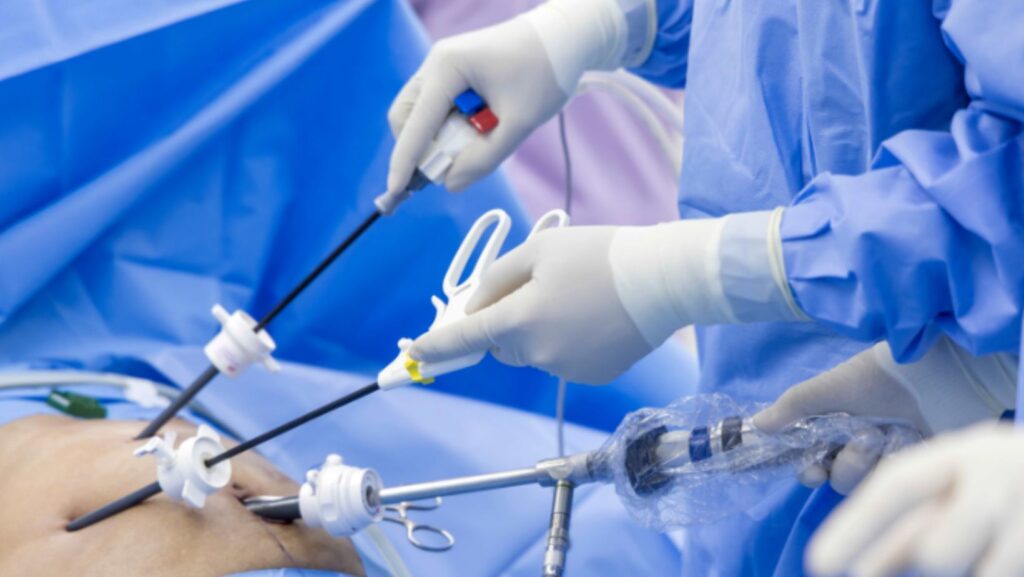Facing gynecological issues can be daunting, especially when surgery is involved. Many women worry about long recovery times, post-surgery pain, and potential complications. That’s where gynecological laparoscopic surgery comes in as a less invasive option. This procedure uses small incisions to access and treat pelvic conditions like endometriosis, uterine fibroids, ovarian cysts, and more.
In this blog post, we’ll explore everything you need to know about gynecological laparoscopic surgery—from the conditions it treats to how to prepare, what happens during the procedure, and what recovery looks like. By the end, you’ll feel more confident about the process and what to expect.
Reasons for Gynecological Laparoscopic Surgery
This less invasive approach is often chosen to diagnose or treat several common conditions Below are some of the key situations where laparoscopic surgery is used:
Fertility Diagnosis and Treatment
For women struggling to conceive, laparoscopic surgery for fertility plays a critical role in both diagnosis and treatment. Whether it’s checking for blocked fallopian tubes, addressing endometriosis, or removing scar tissue, this type of surgery can give doctors a clear view of what’s happening inside. In many cases, resolving these issues can improve the chances of conception.
Endometriosis
Endometriosis is one of the leading causes of pelvic pain and can significantly affect a woman’s quality of life.

With laparoscopic surgery, doctors can get a closer look at the tissue causing the discomfort and, in some cases, remove or treat it during the same procedure.
Ovarian Cysts
While they’re often harmless and go away on their own, larger or more painful ovarian cysts may require surgical removal. Laparoscopic surgery allows the doctor to remove the cyst while preserving the ovary.
Uterine Fibroids
Uterine fibroids are non-cancerous growths that develop within the uterus. For women dealing with heavy periods, pelvic pain, or fertility issues due to fibroids, surgery can provide much-needed relief.
Hysterectomy
For women with chronic conditions like uterine prolapse, severe endometriosis, or cancer, laparoscopic surgery allows for the removal of the uterus with less downtime.
By offering a less invasive option with a faster recovery time, it provides many women with a solution that can address both minor and serious conditions.
Preparing for Surgery
Preparing for gynecological laparoscopic surgery involves a few key steps. First, consult with your doctor to discuss the procedure, its risks, and alternatives. You’ll also need to provide a detailed medical history, including any medications and allergies. A physical exam and pre-operative tests, such as blood and urine tests, may be required to assess your health.
Your doctor may suggest lifestyle changes, like quitting smoking or adjusting your diet, to help with recovery. Finally, ensure you have transportation arranged for the day of surgery, as you won’t be able to drive afterward. Following these steps will help ensure a smoother surgery experience.
The Day of Surgery
On the day of your surgery, you’ll need to arrive at the hospital a few hours before your scheduled time. After checking in and providing the necessary paperwork, you’ll change into a hospital gown and have an IV inserted. Medication to help you relax will also be administered.
You’ll receive anesthesia, either general or spinal, to ensure you’re comfortable during the procedure. The surgical team will make small incisions in your abdomen and insert a laparoscope to view your organs, performing the necessary procedures such as removing a cyst or repairing tissue.
Once the surgery is complete, you’ll be taken to the recovery room, where your vital signs will be monitored to ensure a smooth recovery. Understanding these steps can help you feel more prepared for the day ahead.
Recovery Immediately After Surgery
Recovery after gynecological laparoscopic surgery involves several key steps. Depending on the complexity of your procedure, you may stay in the hospital overnight or for a few days. Pain will be managed with medication, and your incisions will be monitored and dressed to prevent infection. Staying hydrated is important, so drink plenty of fluids.
Rest is essential for healing, and you’ll need to avoid heavy lifting, strenuous exercise, or sexual activity for several weeks. Be sure to attend follow-up appointments with your doctor to track your recovery and address any concerns.
Potential Risks and Complications
While gynecological laparoscopic surgery is generally safe, there are some potential risks and complications to be aware of. Infection can occur at the incision sites or within the abdominal cavity, and excessive bleeding is another possibility during or after surgery. There’s also a chance that surgical instruments could accidentally damage nearby organs in the abdomen.

Additionally, there’s a small risk of blood clots forming in the legs or lungs, and scar tissue (adhesions) may develop between organs, causing discomfort. In rare cases, the surgeon might not be able to complete the procedure as planned.
It’s important to discuss these risks with your doctor, who can explain steps to minimize complications and help you weigh the benefits of the surgery.
Final Thoughts
Gynecological laparoscopic surgery can offer significant benefits for women with various conditions. By understanding the procedure, preparing adequately, and following your doctor’s instructions, you can navigate the recovery process with confidence.
If you’re considering this procedure or have questions about your options, consult with your healthcare provider. They can provide personalized guidance and help you make informed decisions about your health.
